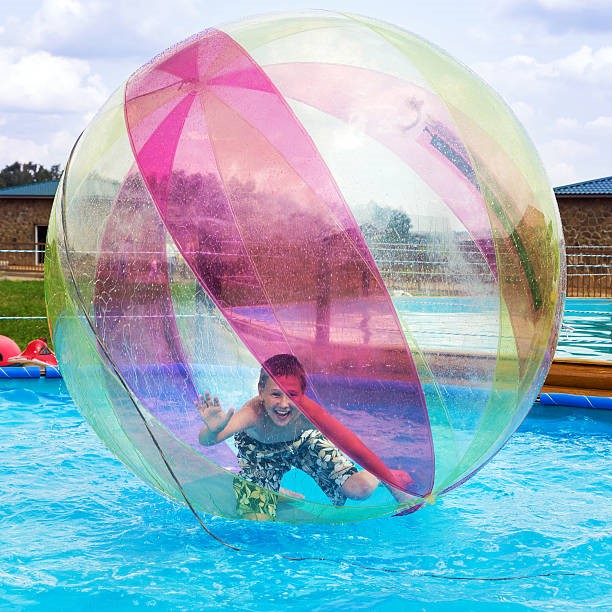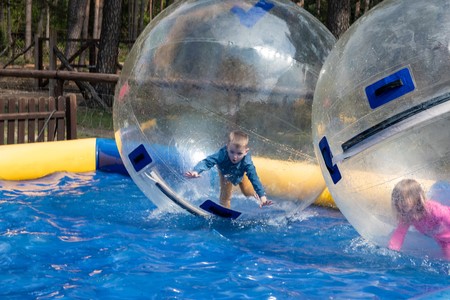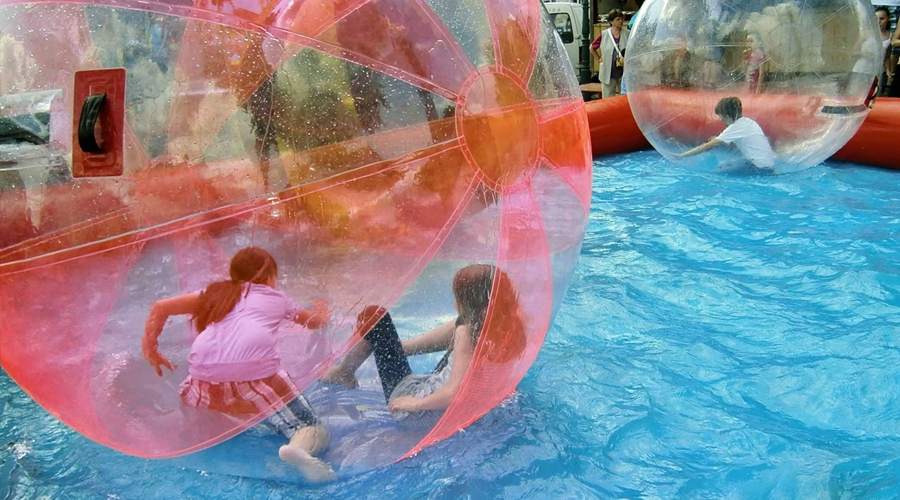main
Safety Guidelines for Walking Water Ball Players
Walking on water is possibly everyone’s ultimate fantasy. And with something called a water walking ball, people can now make this fantasy a reality.
Available at most amusement parks, shopping malls, carnivals, and sporting venues, these large, transparent, inflatable plastic balls allure you to climb into them and allow you to literally ‘walk’ on water.
But are these recreational delights safe to use? Let’s find out.
How Does a Walking Water Ball Work?
The walking water ball is inflated using a blower through a zipper opening. Once fully inflated, the zipper is closed, making the ball airtight with five to seven minutes of oxygen inside.
Once you seal yourself inside the large, transparent ball, you can float or roll on water (and also on grass and ice). Similar to a giant human hamster ball, the ball rolls about, and you move around and forward with it.

Water walking balls are manufactured by various brands and can be found under numerous ride names around the nation. Some enthusiastic homeowners even have them for their backyard pools.
But in recent news, the US Consumer Product Safety Commission (CPSC) advises people to avoid using these recreational balls due to serious safety concerns.
Water Walking Ball: Safety Concerns
SEE VIDEO HERE: WATER-WALKING BALLS WARNING
Water walking is a recreational activity that quickly became extremely popular among people of all ages. However, certain states are now declining to provide permits to use these balls, whereas others have banned them altogether.
CPSC has highlighted certain risks associated with this product:
- No emergency exit: the only way to come out of the ball is if someone opens it from the outside.
- Risk of Injury: the ball has no padding, so if the person inside is struggling or collides with a hard surface, there are significant chances of self-injury, such as a fracture.
- Worsening Symptoms: people already suffering from breathing difficulties, lung/heart disease, or other pre-existing conditions are at higher risk.
- Suffocation: since the ball is airtight, oxygen levels gradually drop inside the ball, and carbon dioxide levels rise due to breathing.
- Drowning: if the ball has a puncture, it can start to fill up with water, with no way for the person inside to escape without external help.
Safety Guidelines for Walking Water Ball Enthusiasts
Even though the safety concerns about walking water balls are genuine, some people just won’t quit using them. After all, they are extremely enjoyable.
However, keeping the guidelines issued by the CPSC in mind, there are a few ways these recreational water balls can be used safely.

For instance, a water park owner stated that he only allowed children older than five years and above to use the ball, and he hasn’t registered any complaints or injuries since the three years he has been running his park.
The park owner also said that he had also established a height and weight requirement for children using the water ball despite the age limit. And another important factor was time – he only allowed children to use the water ball for three minutes.
Further safety guidelines can include:
- proper maintenance of the water balls every day before deflating and storing them
- not allowing children to use them unsupervised
- avoiding hard surfaces around the area where kids are playing with the water ball to avoid impact injury
- asking about any existing health issues before allowing anyone to use a water ball
Final Thoughts
Enjoyment is one thing, but health and safety come before everything else.
With the CPSC’s new warnings in place, operating procedures about commercial walking water balls will need to change drastically. Also, users at home will need to follow strict safety guidelines and precautions to use these recreational water balls at home.

